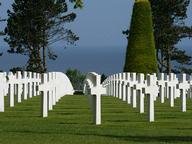
The 1940s: The War Years Trivia Quiz
Aptly nicknamed, many of the events of the 1940s were either directly or indirectly related to World War II.
An ordering quiz
by ponycargirl.
Estimated time: 3 mins.

| What's the Correct Order? | Choices |
| 1. (1940) | First Arab-Israeli War begins |
| 2. (1941) | Evacuation of Dunkirk occurs |
| 3. (1942) | NATO is established |
| 4. (1943) | Pearl Harbor is attacked |
| 5. (1944) | Warsaw Ghetto Uprising breaks out |
| 6. (1945) | Italy becomes a republic |
| 7. (1946) | Battle of Coral Sea takes place |
| 8. (1947) | V-J Day is celebrated |
| 9. (1948) | Operation Overlord is set into motion |
| 10. (1949) | "The Secret Annex" is published |